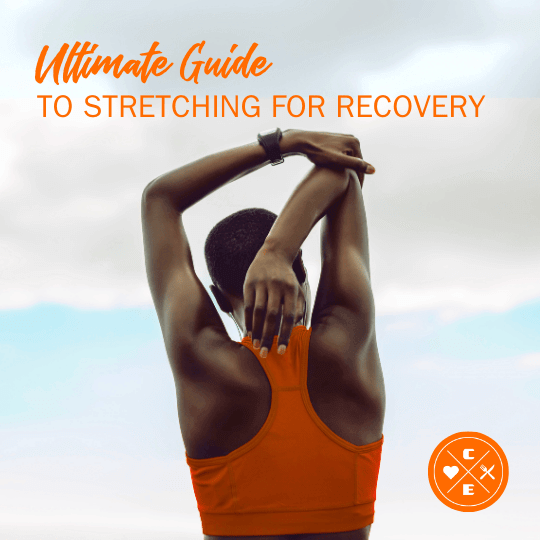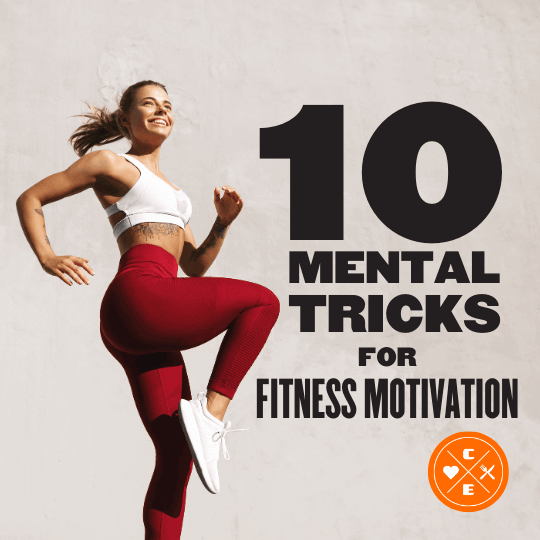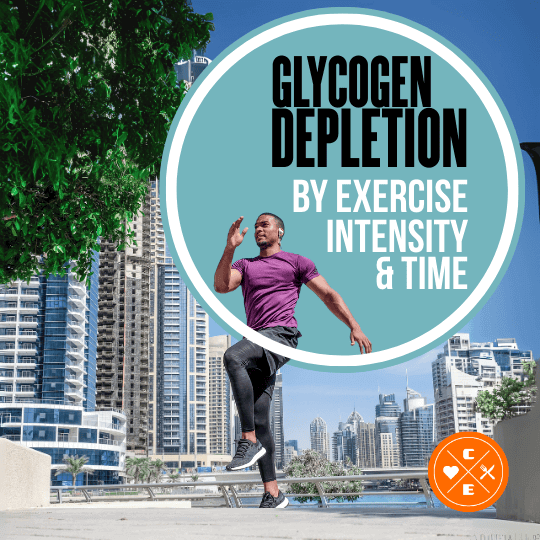Ultimate Guide to Stretching for Recovery

Jason Nista
Exercises & Fitness
12/16/2025 9:26am
8 minute read
Short answer: Static stretches after your workout, dynamic stretches before. Hold each stretch 15-30 seconds, breathe, and stop if anything hurts. That's really all there is to it—the rest is details.
Table of Contents
- 3 Main Stretching Methods
- Best Times to Stretch for Recovery
- Complete Recovery Stretch Routine
- Other Recovery Methods
- Next Steps
- FAQs
Stretching is a key part of recovery that helps repair muscles, reduce soreness, and prevent injuries. Here's a quick breakdown of what you need to know:
- Benefits of Stretching:
- Improves flexibility and posture
- Speeds up recovery after workouts
- Reduces injury risk by keeping muscles flexible
- Stretching Methods:
- Static Stretches: Hold a position for 15-30 seconds to release tension after workouts.
- Dynamic Stretches: Controlled movements to warm up muscles or aid active recovery.
- PNF Stretches: Advanced technique combining stretches with muscle contractions for deeper flexibility.
- When to Stretch:
- Dynamic: Before workouts or during active recovery.
- Static: After workouts or when muscles are warm.
- PNF: During focused recovery sessions.
- Tips for Safe Stretching:
- Warm up first.
- Focus on proper form and mild tension - never push to pain.
- Pair stretching with good nutrition, hydration, and sleep for optimal recovery.
Stretching is most effective when combined with other recovery strategies like foam rolling, protein-rich meals, and quality sleep. Start with static stretches if you're new, then explore dynamic and PNF techniques as you progress. If you want the full picture of how stretching fits into a training program, our Complete Exercise Guide goes deeper.
3 Main Stretching Methods
Learning about different stretching techniques can help improve your recovery process. Here's a breakdown of three common methods to help you decide which works best for your routine.
Static Stretches
Static stretching involves holding a position for 15-30 seconds. It's ideal for post-workout recovery when muscles are warm and more flexible. This method helps ease muscle tension and boosts overall flexibility.
Tips for effective static stretching:
- Hold each position for 15-30 seconds.
- Stretch until you feel mild tension - never push to the point of pain.
- Maintain steady, relaxed breathing throughout.
Focus on the muscles you worked during your exercise session to get the most out of this method.
Dynamic Stretches
Dynamic stretches involve smooth, controlled movements that mimic actions in your workout. These are great for warming up, but they can also aid recovery by increasing blood flow and keeping muscles mobile.
Examples of dynamic stretches include:
- Arm circles to loosen up shoulders
- Walking lunges to improve hip flexibility
- Leg swings to target hamstrings and hip flexors
- Torso twists for better core mobility
This method promotes circulation, which helps muscles recover and repair.
PNF Stretches
Proprioceptive Neuromuscular Facilitation (PNF) stretching combines stretching with muscle contractions for deeper flexibility. It's an advanced technique that often requires a partner or trainer.
How PNF works:
- Start by holding a stretch position.
- Contract the muscle by resisting against your partner for 6-8 seconds.
- Relax and deepen the stretch for 20-30 seconds.
When done correctly, PNF stretches can significantly improve range of motion and release muscle tension. Proper technique is key to avoiding injury.
| Stretching Method | Best Time to Use | Duration | Recovery Benefits |
|---|---|---|---|
| Static | After workouts | 15-30 seconds per stretch | Eases muscle tension, boosts flexibility |
| Dynamic | Before workouts or active recovery | 8-12 repetitions per movement | Improves blood flow, maintains mobility |
| PNF | Dedicated recovery sessions | 6-8 second contractions, 20-30 seconds stretches | Expands range of motion, reduces tension |
When adding these techniques to your recovery plan, focus on proper form to get the best results and avoid injuries. If you're just starting, begin with static stretches, then gradually try dynamic and PNF methods as you gain confidence.
Best Times to Stretch for Recovery
When to Do Each Type
Timing your stretches correctly can make a big difference in how your body recovers.
Dynamic Stretches
These are ideal during warm-ups before workouts. They help get your muscles ready for movement and can also be useful during breaks to keep you active.
Static Stretches
Best done when your muscles are already warm - like right after a workout or following a short warm-up. They help release tension and encourage relaxation.
PNF (Proprioceptive Neuromuscular Facilitation) Stretches
Save these for focused recovery sessions after a proper warm-up. Make sure to give your muscles enough recovery time between these sessions.
Pairing these timing strategies with safe stretching habits will help you get the most out of your recovery routine.
Safe Stretching Guidelines
Once you've nailed the timing, follow these steps to stretch safely and effectively:
Focus on Form
- Keep proper alignment.
- Breathe steadily.
- Move with control - no rushing.
Warm Up First
- Stretching works better when your muscles are warm.
- A quick warm-up can help boost muscle flexibility.
Watch the Intensity
- Aim for mild tension.
- Stop immediately if you feel sharp pain or burning.
Nutrition is another key part of recovery. Clean Eatz Kitchen offers portion-controlled meals designed to support muscle repair and a healthy lifestyle, making it easier to stay on track with your fitness goals.
Complete Recovery Stretch Routine
Key Muscle Group Stretches
To get the most out of a recovery stretch routine, make sure to include all the major muscle groups. This helps improve flexibility and ease muscle tension. For the lower body, focus on stretches that work the hamstrings, quadriceps, calves, and hip flexors. For the upper body, include stretches targeting the back, shoulders, chest, and neck. Ease into each stretch until you feel a gentle pull - nothing too intense. And don't forget: deep, steady breathing can help you relax and make the stretches more effective. Pay attention to how your body feels and adjust as needed.
Adjusting Your Stretches
Fine-tuning your stretches can make recovery more effective:
- If your muscles feel sore, dial back the intensity or shorten the stretch time. Choose movements that promote gentle circulation.
- For tight areas, hold the stretch longer or repeat it to gradually relieve stiffness.
- Recovering from an injury? Modify stretches to avoid putting pressure on sensitive spots while still keeping mobility in check.
Focus on proper form and listen to your body. If you feel unusual pain, stop immediately and consider reaching out to a healthcare professional.
Other Recovery Methods
Beyond stretching, there are additional ways to help your muscles recover and improve overall performance.
Foam Rolling Tips
Foam rolling is a self-massage method that works well alongside stretching. Use light pressure to roll over major muscle groups like your quadriceps, hamstrings, calves, and upper back for about 30–60 seconds each. If you find a tight or sore spot, stop and apply pressure there for 20–30 seconds to help release tension. Avoid rolling directly on joints or bones, and always roll in a way that encourages natural blood flow. After foam rolling, make sure to refuel your body to maximize recovery.
Food and Water Needs
Stay hydrated by drinking at least 64 ounces of water daily, and increase that amount on workout days. After exercising, eat a protein-rich meal or snack to aid in muscle repair. For convenience, Clean Eatz Kitchen offers high-protein meals starting at $8.99, featuring balanced macros crafted by professional chefs and dietitians.
Key nutrients to focus on include:
- Protein for muscle repair
- Complex carbohydrates for energy replenishment
- Healthy fats for overall recovery support
Sleep and Recovery
Rest is just as important as movement and nutrition when it comes to recovery. Quality sleep - 7 to 9 hours per night - is essential for muscle repair and fitness progress. Our guide to sleep and health covers why this matters more than most people realize. During deep sleep, your body releases growth hormone, which plays a key role in repairing and strengthening muscles.
To improve your sleep quality, try these tips:
- Keep your bedroom temperature between 65°F and 68°F
- Avoid screens for at least an hour before bedtime
- Use blackout curtains or an eye mask to block out light
- Stick to a consistent sleep schedule every night
Next Steps
Evaluate your workouts and recovery habits to craft a routine that suits your needs. Use the tips shared earlier to adjust based on your workout style. For instance, if you're doing strength training 3–4 times a week, prioritize static stretches targeting major muscle groups after your sessions. On the other hand, high-intensity cardio calls for dynamic stretches beforehand and static stretches afterward.
Keep track of what works for you. Pay attention to which stretches ease tension the most and tweak your routine as needed. For example, if your hip flexors feel tight regularly, consider adding an extra 30 seconds to stretches targeting that area.
Combine stretching with other recovery strategies we've covered. Create a simple daily schedule:
- Morning: 5–10 minutes of dynamic stretches
- Post-workout: 15–20 minutes of static stretches
- Evening: 10 minutes of gentle stretches
Don't overlook recovery nutrition. Plan meals ahead of time to make it easier. Clean Eatz Kitchen offers convenient options to simplify post-workout meals. Pair this with staying hydrated and getting quality sleep to maximize your recovery.
Stick with these changes, and within 2–3 weeks, you should notice better flexibility and less muscle tension.
FAQs
How long should I hold a stretch for recovery?
Hold static stretches for 15-30 seconds per muscle group. For PNF stretches, contract for 6-8 seconds, then hold the deeper stretch for 20-30 seconds.
Should I stretch before or after a workout?
Dynamic stretches before, static stretches after. Static stretching on cold muscles can temporarily reduce power output.
Does stretching prevent muscle soreness?
Not really. Stretching helps with flexibility and tension, but research shows it doesn't significantly prevent DOMS. Nutrition, hydration, and sleep do more for soreness.
How often should I stretch?
After every workout at minimum. For general flexibility, 5-10 minutes daily helps. Gentle stretching on rest days promotes blood flow without adding stress.



